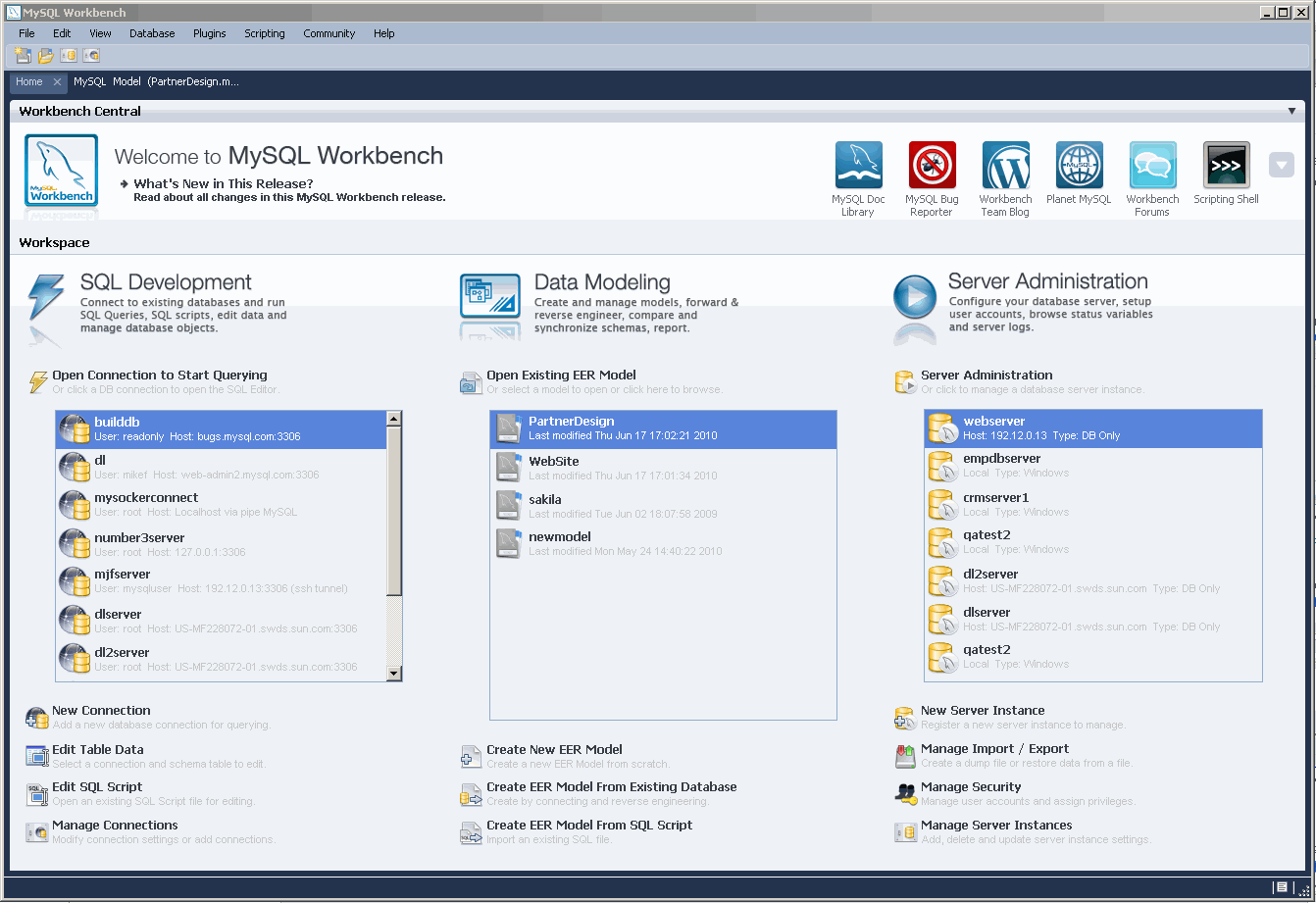
Maximum time to wait before a connection attempt is aborted. Set the value to 0 to skip the read timeout.ĭBMS connection timeout interval (in seconds): The maximum amount of time the query can take to return data from the DBMS. Set the value to 0 to not send keep-alive messages.ĭBMS connection read timeout interval (in seconds): Time interval between sending keep-alive messages to the DBMS. ).ĭBMS connection keep-alive interval (in seconds): Whether to show metadata and internal schemas in the schema tree, such as INFORMATION_SCHEMA, mysql, and schemas starting with the period character (. For this reason, this facility can be switched off for models containing large numbers of schemas and tables. Enumerating, populating, and drawing large numbers of items can significantly increase loading times. Group nodes that were previously expanded in the active schema when the SQL editor was last closed are re-expanded and loaded.Įnabled by default. Restore expanded state of the active schema objectsĮnabled by default. Select this option if you prefer the simpler Query tabs that, for example, do not prompt to be saved when closed. Scripts are restored from the last saved version, if MySQL Workbench shuts down.Ĭreate new tabs as Query tabs instead of Fileīy default, opening a new SQL editor tab opens as an SQL File tab. Permits saving and reloading the SQL editor tabs after MySQL Workbench is closed and reopened (including after an unexpected shutdown).Īuto-save scripts interval: įrequency of the automatic saves. This new setup often means I quickly get hundreds of tabs open in MySQL Workbench and I lose important ones.Įnabled by default. In the old version this new query would simple override your current tab. If you right click on a table in MySQL Workbench and click 'Select Rows - Limit 1000' a new tab will be created.With the chosen database expanded in the SCHEMAS tab, right click on Tables and select Create Table Enter the table name at the top (next to Name: ) and add all column names, their data type, constraints, default values, and any other details you. In the following example, we create a new table called 'Vegetables' in our VegeShop database.from customer, then press Ctrl+Enter to run the current query in MySQL.

Then in the SQL editor type your query, for example, select. Then open an SQL editor by clicking on the menu File New Query Tab or by pressing the key Ctrl+T. Open MySQL Workbench and connect to the database and set a default database.
MYSQL WORKBENCH SQLEDITOR FONT UPDATE
FROM `CData ApacheHive Sys`.Customers With access to live Hive data from MySQL Workbench, you can easily query and update Hive, just like you would a MySQL database. Write a SQL query to retrieve Hive data, like SELECT. Open the connection you just created (CData SQL Gateway for Hive). As the following figure shows, the SQL editor preferences include both general options and others that apply to specific editors:įigure 3.6 Preferences: Main SQL Editor Section

This section provides configuration options that affect the SQL editor functionality in MySQL Workbench.


 0 kommentar(er)
0 kommentar(er)
